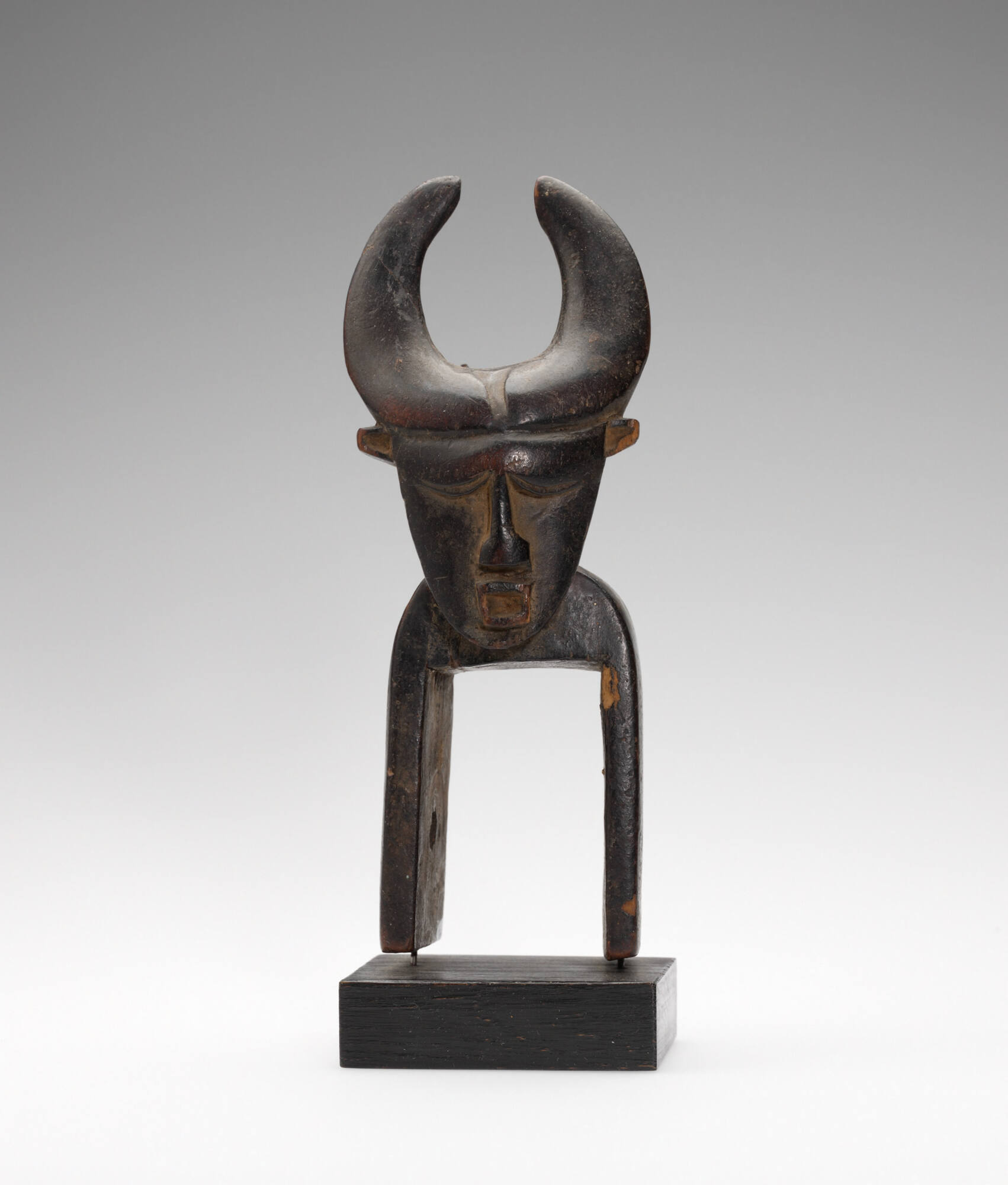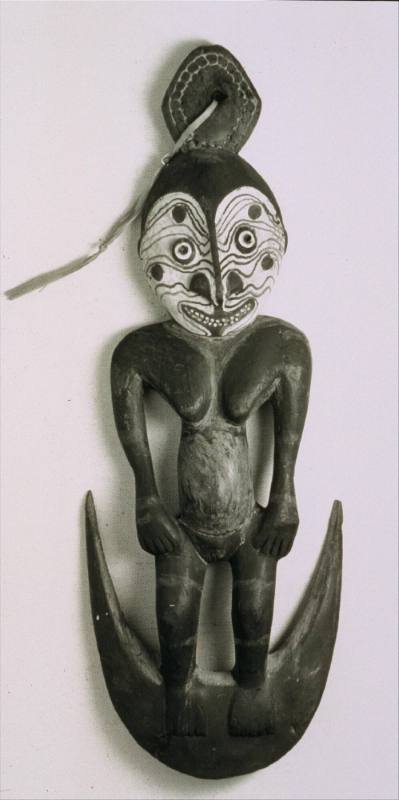
Object Details
Culture
Baule peoples
Date
19th-20th century
Medium
Wood
Dimensions
Height: 8 inches (20.3 cm)
Credit Line
Gift of William W. Brill
Object
Number
71.005
BRIEF DESCRIPTIONThis is a heddle pulley, used by Baule weavers. This pulley features two heads: a h(…)
BRIEF DESCRIPTIONThis is a heddle pulley, used by Baule weavers. This pulley features two heads: a human head on one side, and an animal head on the other.WHERE WAS IT MADE?This was made in the Ivory Coast, in a Baule community.HOW WAS IT MADE?This pulley was carved by a Baule carver from a piece of wood using hand tools such as an adze and a knife.HOW WAS IT USED?Heddle pulleys are part of the weaving system used by Baule men. Baule weavings are distinctive for their blue and white patterns. Men ikat-dye (a process much like tie-dying) some of the threads with indigo. The heddle pulley suspends the heddles, which are alternately moved up and down with foot pedals. WHY DOES IT LOOK LIKE THIS?Although Baule communities now purchase plastic imported goods, in the recent past, Baule sculptors adorned everyday objects such as heddle pulleys, stools, combs, and spoons with animal and human heads, as well as incised geometric designs. Figures and faces that adorn heddle pulleys do not represent a spirit or divine being. Nevertheless, sculptors devoted considerable time and effort to the creation of finely made objects. Unlike sculpted figures and masks that convey deeper meaning, everyday objects are examined closely for their craftsmanship, and are described with words that mean, “to take a good look.” Sculptors take great care in the production of these small objects because they can often lead to larger commissions for figures or masks.To see other Baule heddle pulleys in the Museum’s collection, search for object numbers 88.026.052 and 84.025.008 in the keyword search box.












